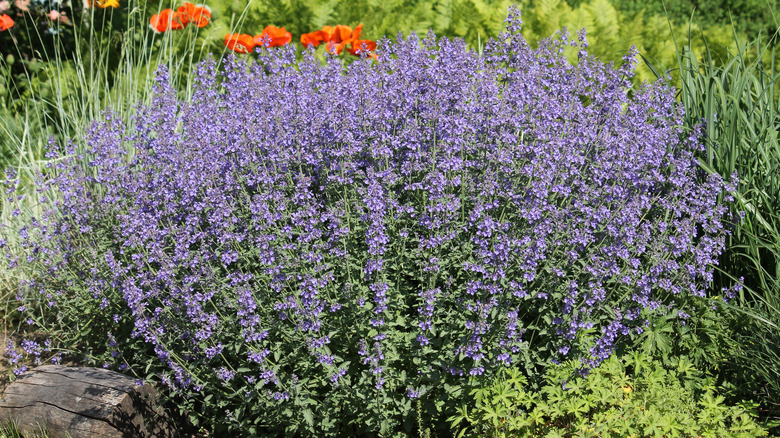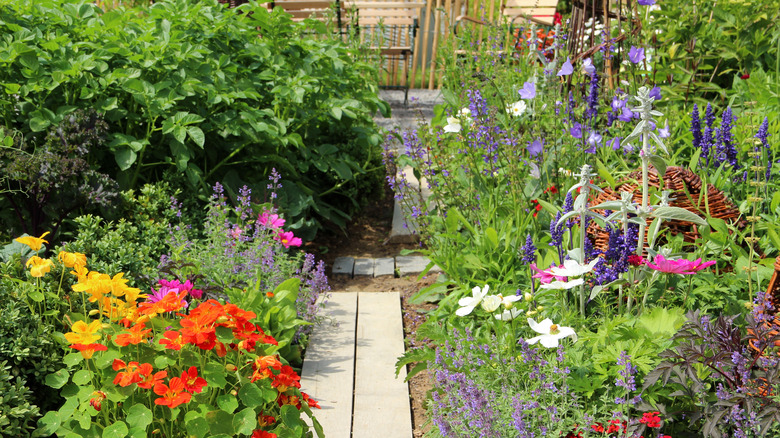You may not have considered catnip as a tool in your gardening arsenal, but surprisingly, it can help repel thrips, serving as an effective insect repellent. While studies specifically focusing on catnip’s effect on thrips are limited, a notable 2024 study published in the journal Scientific Reports highlighted its potency, even exceeding that of DEET. This efficacy is largely attributed to nepetalactone, an organic active compound found in the Nepeta species, primarily in catnip. It’s responsible for the plant’s characteristic odor, which is highly appealing to cats, but repulsive to various insects. Its mechanism as an insect repellent is similar to that of many synthetic compounds, disrupting the sensory perceptions of insects, thus deterring them from approaching the plant.
Understanding thrips is crucial to appreciating catnip’s role in repelling them. These tiny, slender insects with fringed wings are notorious for feeding on a variety of plants, including chrysanthemums, carnations, cucumbers, tomatoes, and many more. They can cause significant damage to gardens by sucking plant fluids and transmitting diseases. Due to their small size and rapid reproduction rate, controlling thrips can be challenging, making natural repellents like catnip an appealing option and excellent companion plant. To leverage catnip’s repellent properties effectively, understanding the plant and its growth conditions are essential.
Understanding catnip for optimum thrip repellency

Catnip, a plant with origins in Europe and Asia, has successfully spread to various regions around the world, showcasing its remarkable adaptability to diverse climates. As a hardy perennial, catnip flourishes in well-drained soil, demonstrating a preference for sunny locales. However, its versatility shines through its ability to prosper in areas of partial shade. The robust nature of catnip is a key aspect of its appeal. It exhibits strong resilience to challenging conditions like droughts, reducing the need for constant care and attention. When it comes to watering, catnip’s drought-resistant qualities mean that it requires minimal intervention. However, to maintain the plant’s health and the potency of its insect-repelling aromatic oils, occasional watering during extended dry periods may be beneficial.
Fertilization practices for catnip also warrant consideration. While the plant doesn’t have high fertility requirements, it’s important to strike a balance. Over-fertilizing can lead to rapid, lush growth, which might attract diseases and pests due to excessive nutrients. This can inadvertently reduce the plant’s effectiveness as a repellent. Therefore, adopting a moderate approach to fertilization is recommended. Focusing on maintaining the overall soil health rather than stimulating aggressive growth ensures that the plant remains healthy and its natural repellent properties are not diminished.
Catnip as a companion plant to repel thrips

In addition to understanding catnip’s growth conditions, it’s also important to consider its placement in the garden to optimize its repellency. Planting catnip near other plants that are susceptible to insect pests can create a protective barrier. However, when using catnip as a companion plant to repel thrips, there are several important factors to consider. Firstly, catnip is often described as invasive, meaning it can spread quite quickly throughout your garden. To prevent this, consider planting catnip in a container and then placing it near the plants you wish to protect. If you prefer to plant it directly in the soil amongst other plants, you’ll have to implement control measures. This might involve trimming back the plant or using barriers to manage its growth.
Another crucial aspect to remember is that, while catnip is an excellent repellent for thrips and other pests, it also attracts cats. This attraction can be a double-edged sword; cats may help control pests like rodents, but they can also disturb your garden. To mitigate this, place catnip strategically in areas where a feline visit would be less disruptive. Finally, it’s essential to integrate catnip thoughtfully into your garden ecosystem. Planting catnip alongside susceptible plants can significantly reduce thrip populations, but it should be part of a broader integrated pest management strategy. This approach might include monitoring thrip populations, using water sprays to dislodge them, and encouraging natural predators.



